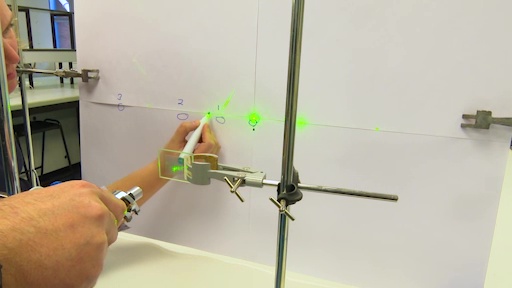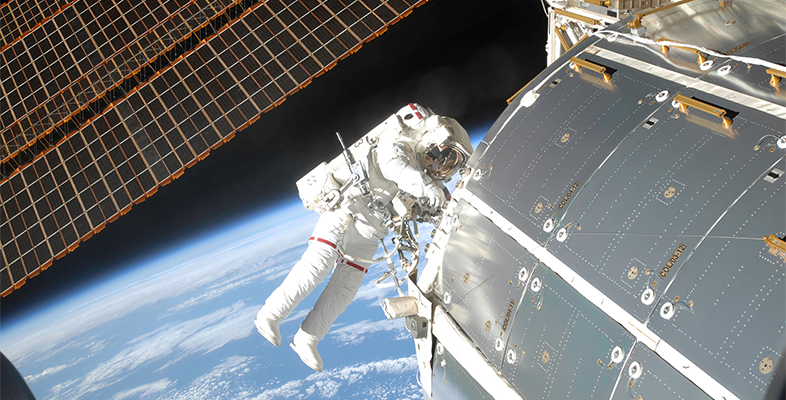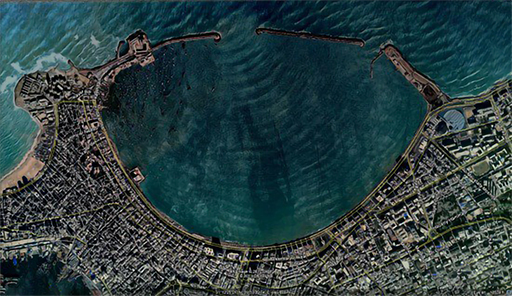3 Diffraction of waves
Before you journey into the quantum world, you need to consider some physical effects that can be seen in your everyday life. Diffraction of waves is one of them. For example, when the entrance to a harbour is of the right size, water waves diffract, or spread out, as they move into the harbour (Figure 4).
If you click here [Tip: hold Ctrl and click a link to open it in a new tab. (Hide tip)] and select ‘slits’, it will take you to an online animation where you can change the gap size for single and double slit experiments in ripple tank simulations. Note carefully what happens to the waves, then try Activity 2.
Activity 2 Exploring diffraction
Choose the one correct option to complete the following statements based on the animation.
a.
diffract less
b.
diffract more
c.
unchanged
The correct answer is b.
Answer
In a single slit set-up, making the gap smaller makes the relevant parts of the wave diffract more.
a.
diffract less
b.
diffract more
c.
unchanged
The correct answer is a.
Answer
In a single slit set-up, making the gap larger makes the relevant parts of the wave diffract less.
a.
add up and cancel each other out
b.
add up but stay the same
c.
subtract from each other but increase
The correct answer is a.
Answer
In the ripple tank simulation, when you select ‘two slits’, the relevant parts of the waves add up and cancel each other out.
You can also see diffraction effects using LASER light. Watch Video 2 where this effect is demonstrated using LASER pens and diffraction gratings. Then complete Activity 3.

Transcript: Video 2 LASER pen diffraction experiment.
Here, the concept of light behaving as a particle and a wave is introduced. Later on, you will see how electrons, as small particles of matter, can also behave as particles and waves.
Activity 3 The LASER diffraction experiment
a.
red and green
b.
blue, green and red
c.
yellow and red
d.
green and blue
e.
green, red, blue and yellow
The correct answer is b.
a.
300
b.
1200
c.
600 and 1200
d.
300 and 600
e.
300
The correct answer is d.
a.
moved further away
b.
moved closer
c.
were unchanged
The correct answer is b.
As the number of lines per millimetre on the diffraction grating decreases, the distance d between the lines increases. When this happens, the angle θ increases which affects the distances between the spots in Question 3 above. But how are these terms related to each other? Video 2 introduced Equation 1 which can now be explained in more detail.
n is an integer (whole number) as you count the dots from the centre outwards; the central dot is labelled n = 0.
λ is the wavelength of the LASER and is measured in m.
d is the separation between adjacent lines on the diffraction grating, again measured in m.
θ is the angle of diffraction from the LASER pen to the individual dots.
sin(θ) is the sine of the angle θ; this can be calculated by using the ‘sin’ button on your calculator.
You will now look at sodium D-lines and the simplest atom of all, hydrogen.

